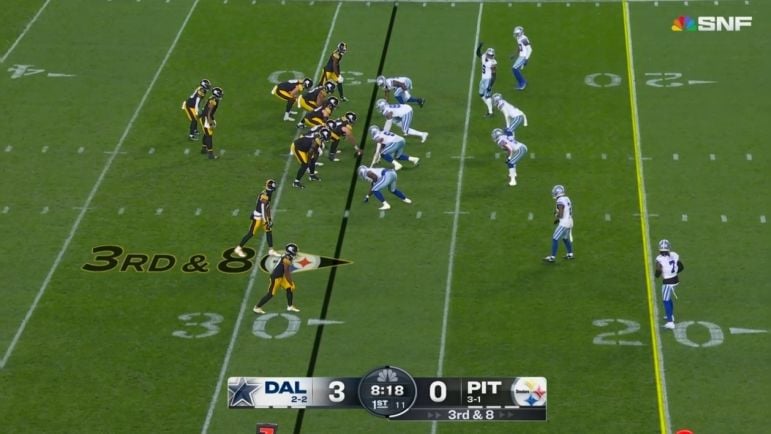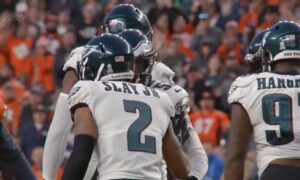Mike Tomlin says he doesn’t live in his fears, but the Pittsburgh Steelers sure have been running the ball a lot on third and long. Their loss to the Dallas Cowboys last Sunday was no exception, the Steelers running on third and eight from the Cowboys’ 28. Backup RB Aaron Shampklin took the handoff five yards, and the Steelers settled for a 41-yard field goal to knot the game at three.
Why essentially “punt” on third and long to set up a field goal? Arthur Smith attempted to rationalize it during his Thursday meeting with reporters.
“Sometimes when it works, it’s great,” Smith said via a team-issued transcript. “A little bit strategically, go back to Indy, a few other games, that field goal fringe area is usually a high-pressure down, so you’re playing the game here, especially early in there, about certain looks, seeing what they’re doing. May have packaged something different, a look, they check out of it or whatever it is.”
Here’s a look at the play.
While we’ll dive into the data for a separate article later this week, this isn’t a one-off occurrence. Pittsburgh is near tops in the NFL running the ball in third-and-long situations. Perhaps what makes it more frustrating is running on third and makeable. Call a run on third and 20, that’s understandable. Get some yardage back, focus on flipping the field or taking the points. But here? There’s a legitimate chance to convert and keep the drive alive into the red zone. Instead, the Steelers settled for three.
Smith’s point suggests being worried about the blitz and the Cowboys were an aggressive Sim/A-gap pressure team. He added that a mostly successful run can set up going for it on fourth down.
“You also have the factor of, if you get it in — which is not special anymore, but if you’re fourth and two or less, you get a lot of go opportunities,” Smith said. “Obviously, we didn’t get what we wanted. There’s risk in every call.”
Pittsburgh ended up in fourth and three and kicked. Prior to the Cowboys game, the Steelers had only gone for it on fourth down three times in their first four games. A failed QB sneak against Atlanta, a failed QB run against Indianapolis, and a failed incompletion to WR Van Jefferson to close out the loss to the Colts. Only two of those situations were short yardage and both were unsuccessful, making Smith’s comment about playing to win on fourth down less logical.
To his and Pittsburgh’s credit, they were successful on two fourth-and-short attempts against Dallas. But the comments still feel frustrating. The Steelers are conservative enough to play for third and short. Now, they’re playing for fourth and a couple yards. Those mentalities harken back to football when it was televised in black and white.
The reality is that the Steelers trust their kicker and their defense more than their offense. It makes them content playing for three points to tie the game rather than the lead. It’s a model that’s allowed them to make the playoffs, but it’s fair to wonder if it’ll take them beyond.








